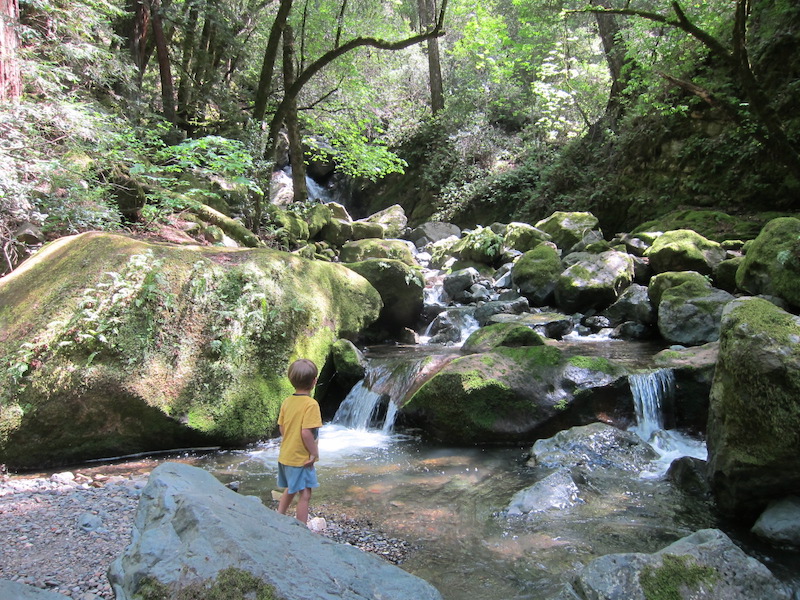By order of the Sonoma County Health Officer, local parks and open spaces are now operating under an amended closure termed “soft closure”—meaning they are accessible during normal park hours by foot or bicycle only.
The new rules apply to most non-coastal parks and open spaces, including those managed by Sonoma Ecology Center—Sugarloaf Ridge State Park, Sonoma Garden Park, Nathanson Creek Preserve, Montini Open Space Preserve and Sonoma Overlook Trail—and went into effect on Wednesday, April 29. The soft closure will remain in place until further notice.
“The intent and effect of this Order is to allow restricted and limited use of some parks to provide the opportunity for residents to walk, jog, hike or bike to and in Parks near their homes,” the new order states. Driving to parks is not allowed in any way, “except to the limited extent necessary to provide for disabled access as a reasonable accommodation.”
Certain open spaces in Sonoma County, including all beaches, remain fully closed to the public. For those open spaces under soft closure, park managers emphasize that all visitors must continue to follow social distancing protocols such as wearing a face mask, maintaining a distance of six feet or more between yourself and others, and staying home if sick.
“The County Health Officer has been working very hard to keep Sonoma County’s residents safe. We know this current decision was not made lightly, and agree that it is the best course of action in continuing to protect public health during the COVID-19 pandemic,” said Richard Dale, executive director of Sonoma Ecology Center.
Different park facilities have their own guidelines for safe access, and visitors are encouraged to check park websites for specific information. At Sugarloaf, park manager John Roney warns there is no legal parking within several miles, and Adobe Canyon Road will be patrolled for parking violations.
As noted in the amended order, issued on Tuesday by Sonoma County Health Officer Dr. Sundari R. Mase, all public parks, beaches and other open spaces in the county were fully closed on March 23 following heavy usage by residents. Health officials determined that the crush of visitors to those places defeated the purpose of shelter-in-place orders and could allow the virus to spread.
“Then, as now, crowding makes it extremely difficult for persons to maintain the required social distancing to protect public health during this pandemic, especially in those areas that bring an increased number and concentration of visitors by use of automobile,” the order states.

